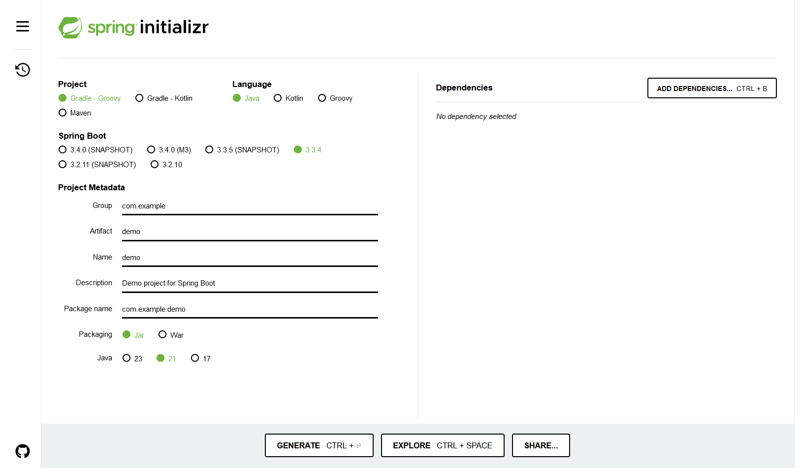
在这篇文章中,我将演示如何使用小语言模型 (slm) 创建函数调用代理。利用 slm 可以带来一系列好处,特别是与 lora 适配器等工具配合使用时,可以实现高效的微调和执行。虽然大型语言模型 (llm) 功能强大,但它们可能会占用大量资源且速度缓慢。另一方面,slm 更加轻量级,使其非常适合硬件资源有限的环境或低延迟至关重要的特定用例。
通过将slm与lora适配器结合使用,我们可以将推理和函数执行任务分开以优化性能。例如,模型可以使用适配器执行复杂的函数调用,并在没有适配器的情况下处理推理或思考任务,从而节省内存并提高速度。这种灵活性非常适合构建函数调用代理等应用程序,而无需大型模型所需的基础设施。
此外,slm 可以轻松扩展以在计算能力有限的设备上运行,这使其成为优先考虑成本和效率的生产环境的理想选择。在此示例中,我们将使用通过 unsloth 在 salesforce/xlam-function-calling-60k 数据集上训练的自定义模型,演示如何利用 slm 创建高性能、低资源的 ai 应用程序.
此外,这里讨论的方法可以扩展到更强大的模型,例如llama 3.1-8b,它具有内置的函数调用功能,在需要更大的模型时提供平滑的过渡。
1. 使用 unsloth 启动模型和分词器
我们首先使用 unsloth 设置模型和标记器。在这里,我们定义最大序列长度为 2048,尽管这个长度是可以调整的。我们还启用4 位量化来减少内存使用量,非常适合在内存较低的硬件上运行模型。
from unsloth import fastlanguagemodel
max_seq_length = 2048 # choose any! we auto support rope scaling internally!
dtype = none # none for auto detection. float16 for tesla t4, v100, bfloat16 for ampere+
load_in_4bit = true # use 4bit quantization to reduce memory usage. can be false.
model, tokenizer = fastlanguagemodel.from_pretrained(
model_name = "akshayballal/phi-3.5-mini-xlam-function-calling",
max_seq_length = max_seq_length,
dtype = dtype,
load_in_4bit = load_in_4bit,
)
fastlanguagemodel.for_inference(model);
2. 实施受控发电的停止标准
为了确保代理在函数调用后暂停执行,我们定义了停止条件。当模型输出关键字“pause”时,这将停止生成,从而允许代理获取函数调用的结果。
from transformers import stoppingcriteria, stoppingcriterialist
import torch
class keywordsstoppingcriteria(stoppingcriteria):
def __init__(self, keywords_ids:list):
self.keywords = keywords_ids
def __call__(self, input_ids: torch.longtensor, _: torch.floattensor, **kwargs) -> bool:
if input_ids[0][-1] in self.keywords:
return true
return false
stop_ids = [17171]
stop_criteria = keywordsstoppingcriteria(stop_ids)
3. 定义函数调用工具
接下来,我们定义代理在执行期间将使用的函数。这些python函数将充当代理可以调用的“工具”。返回类型必须明确,并且函数应包含描述性文档字符串,因为代理将依赖于此来选择正确的工具。
def add_numbers(a: int, b: int) -> int:
"""
this function takes two integers and returns their sum.
parameters:
a (int): the first integer to add.
b (int): the second integer to add.
"""
return a + b
def square_number(a: int) -> int:
"""
this function takes an integer and returns its square.
parameters:
a (int): the integer to be squared.
"""
return a * a
def square_root_number(a: int) -> int:
"""
this function takes an integer and returns its square root.
parameters:
a (int): the integer to calculate the square root of.
"""
return a ** 0.5
4. 为代理生成工具描述
这些函数描述将被构造成一个字典列表。代理将使用这些来了解可用的工具及其参数。
tool_descriptions = []
for tool in tools:
spec = {
"name": tool.__name__,
"description": tool.__doc__.strip(),
"parameters": [
{
"name": param,
"type": arg.__name__ if hasattr(arg, '__name__') else str(arg),
} for param, arg in tool.__annotations__.items() if param != 'return'
]
}
tool_descriptions.append(spec)
tool_descriptions
这就是输出的样子
[{'name': 'add_numbers',
'description': 'this function takes two integers and returns their sum.nn parameters:n a (int): the first integer to add.n b (int): the second integer to add.',
'parameters': [{'name': 'a', 'type': 'int'}, {'name': 'b', 'type': 'int'}]},
{'name': 'square_number',
'description': 'this function takes an integer and returns its square.nn parameters:n a (int): the integer to be squared.',
'parameters': [{'name': 'a', 'type': 'int'}]},
{'name': 'square_root_number',
'description': 'this function takes an integer and returns its square root.nn parameters:n a (int): the integer to calculate the square root of.',
'parameters': [{'name': 'a', 'type': 'int'}]}]
5. 创建代理类
然后我们创建代理类,它将系统提示、函数调用提示、工具和消息作为输入,并返回代理的响应。
- __call__ 是使用消息调用代理时调用的函数。它将消息添加到消息列表并返回代理的响应。
- execute 是被调用以生成代理响应的函数。它使用模型来生成响应。
- function_call 是被调用以生成代理响应的函数。它使用函数调用模型来生成响应。
import ast
class agent:
def __init__(
self, system: str = "", function_calling_prompt: str = "", tools=[]
) -> none:
self.system = system
self.tools = tools
self.function_calling_prompt = function_calling_prompt
self.messages: list = []
if self.system:
self.messages.append({"role": "system", "content": system})
def __call__(self, message=""):
if message:
self.messages.append({"role": "user", "content": message})
result = self.execute()
self.messages.append({"role": "assistant", "content": result})
return result
def execute(self):
with model.disable_adapter(): # disable the adapter for thinking and reasoning
inputs = tokenizer.apply_chat_template(
self.messages,
tokenize=true,
add_generation_prompt=true,
return_tensors="pt",
)
output = model.generate(
input_ids=inputs,
max_new_tokens=128,
stopping_criteria=stoppingcriterialist([stop_criteria]),
)
return tokenizer.decode(
output[0][inputs.shape[-1] :], skip_special_tokens=true
)
def function_call(self, message):
inputs = tokenizer.apply_chat_template(
[
{
"role": "user",
"content": self.function_calling_prompt.format(
tool_descriptions=tool_descriptions, query=message
),
}
],
tokenize=true,
add_generation_prompt=true,
return_tensors="pt",
)
output = model.generate(input_ids=inputs, max_new_tokens=128, temperature=0.0)
prompt_length = inputs.shape[-1]
answer = ast.literal_eval(
tokenizer.decode(output[0][prompt_length:], skip_special_tokens=true)
)[
0
] # get the output of the function call model as a dictionary
print(answer)
tool_output = self.run_tool(answer["name"], **answer["arguments"])
return tool_output
def run_tool(self, name, *args, **kwargs):
for tool in self.tools:
if tool.__name__ == name:
return tool(*args, **kwargs)
6. 定义系统和函数调用提示
我们现在定义两个关键提示:
- 系统提示:智能体推理和工具使用的核心逻辑,遵循react模式。
- 函数调用提示:通过传递相关工具描述和查询来启用函数调用。
system_prompt = f"""
you run in a loop of thought, action, pause, observation.
at the end of the loop you output an answer
use thought to describe your thoughts about the question you have been asked.
use action to run one of the actions available to you - then return pause.
observation will be the result of running those actions. stop when you have the answer.
your available actions are:
{tools}
example session:
question: what is the mass of earth times 2?
thought: i need to find the mass of earth
action: get_planet_mass: earth
pause
observation: 5.972e24
thought: i need to multiply this by 2
action: calculate: 5.972e24 * 2
pause
observation: 1,1944×10e25
if you have the answer, output it as the answer.
answer: \{{1,1944×10e25\}}.
pause
now it's your turn:
""".strip()
function_calling_prompt = """
you are a helpful assistant. below are the tools that you have access to. nn### tools: n{tool_descriptions} nn### query: n{query} n
"""
7. 实现react循环
最后,我们定义了一个循环,使代理能够与用户交互,执行必要的函数调用,并返回正确的答案。
import re
def loop_agent(agent: Agent, question, max_iterations=5):
next_prompt = question
i = 0
while i
<h3>
结论
</h3>
<p>按照此分步指南,您可以使用使用 <strong>unsloth</strong> 和 <strong>lora 适配器</strong> 训练的自定义模型创建函数调用代理。这种方法确保高效的内存使用,同时保持强大的推理和函数执行能力。</p>
<p>通过将此方法扩展到更大的模型或自定义代理可用的功能来进一步探索。</p>
以上就是使用 SLM 从头开始构建 ReAct Agent的详细内容,更多请关注php中文网其它相关文章!





